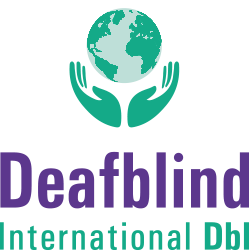Rare disease day is held on the last day of February every year to raise awareness of rare diseases. Deafblindness is a low incidence disability with an estimated prevalence of 0.2 – 2.0% (World Federation of Deafblind, 2018), and it was estimated that in 2013, there were 13,700 Australian’s with deafblindness under 60 years old (Dyke, 2013). Of the estimated numbers of people with deafblindness a small percentage of this group have rare diseases or syndromes which result in combined vision and hearing impairments (deafblindness), four of which will be presented below.
Usher syndrome results in the combination of a hearing impairment and retinitis pigmentosa (a vision condition causing tunnel vision and night blindness). There are multiple types of Usher syndrome and those born with Usher syndrome type 1 have associated balance problems. Kimberling et al (2010) found 11% of all children diagnosed with a hearing impairment carried a gene for Usher syndrome and estimate the prevalence may be as high as one in 6,000. People with Usher syndrome communicate in a variety of ways depending on their level of vision and hearing and may use sign language, tactile sign language, manual alphabet, or speech (sometimes requiring amplification).
Congenital rubella syndrome results from maternal infection with the rubella virus during pregnancy. When rubella infection occurs during early pregnancy, serious consequences, including vision and hearing impairments can result. With immunization programs, the prevalence of congenital rubella syndrome has decreased in developed countries but remains an issue in less developed countries that do not have vaccination programs.
CHARGE syndrome also results in combined vision and hearing impairment. The true incidence of CHARGE syndrome is not known, with estimates ranging from 0.1 to 1.2 in 10,000. The highest incidence of CHARGE syndrome in Canada was estimated at 1 in 8,500 in provinces with a research interest in CHARGE syndrome, so the true incidence of CHARGE syndrome reported internationally may therefore be underestimated. (Blake and Prasad, 2006).
Norrie disease is an inherited eye condition and approximately one-third of individuals with Norrie disease develop progressive hearing loss (thus deafblindness), and more than half experience developmental delays in motor skills such as sitting and walking.
Norrie disease is rare, but the exact incidence is not known. (US. National Library of Medicine, 2020).
Congenital Rubella Syndrome, CHARGE syndrome, and Norrie disease often have associated medical and developmental issues, resulting in individuals having highly complex support needs.
Regardless of the cause of deafblindness, all those who have combined vision and hearing impairments will experience challenges with communication, safe and independent orientation and mobility, and access to information and the environment.
There are people around the world with deafblindness caused by rare diseases and syndromes who are medical doctors, lawyers, artists, Paralympians, triathletes, board members, parents, musicians, and researchers.
With adequate and appropriate, skilled supports, all individuals with deafblindness can learn, participate, contribute and thrive.
For more information on how you can best support people with deafblindness contact Deafblind International
